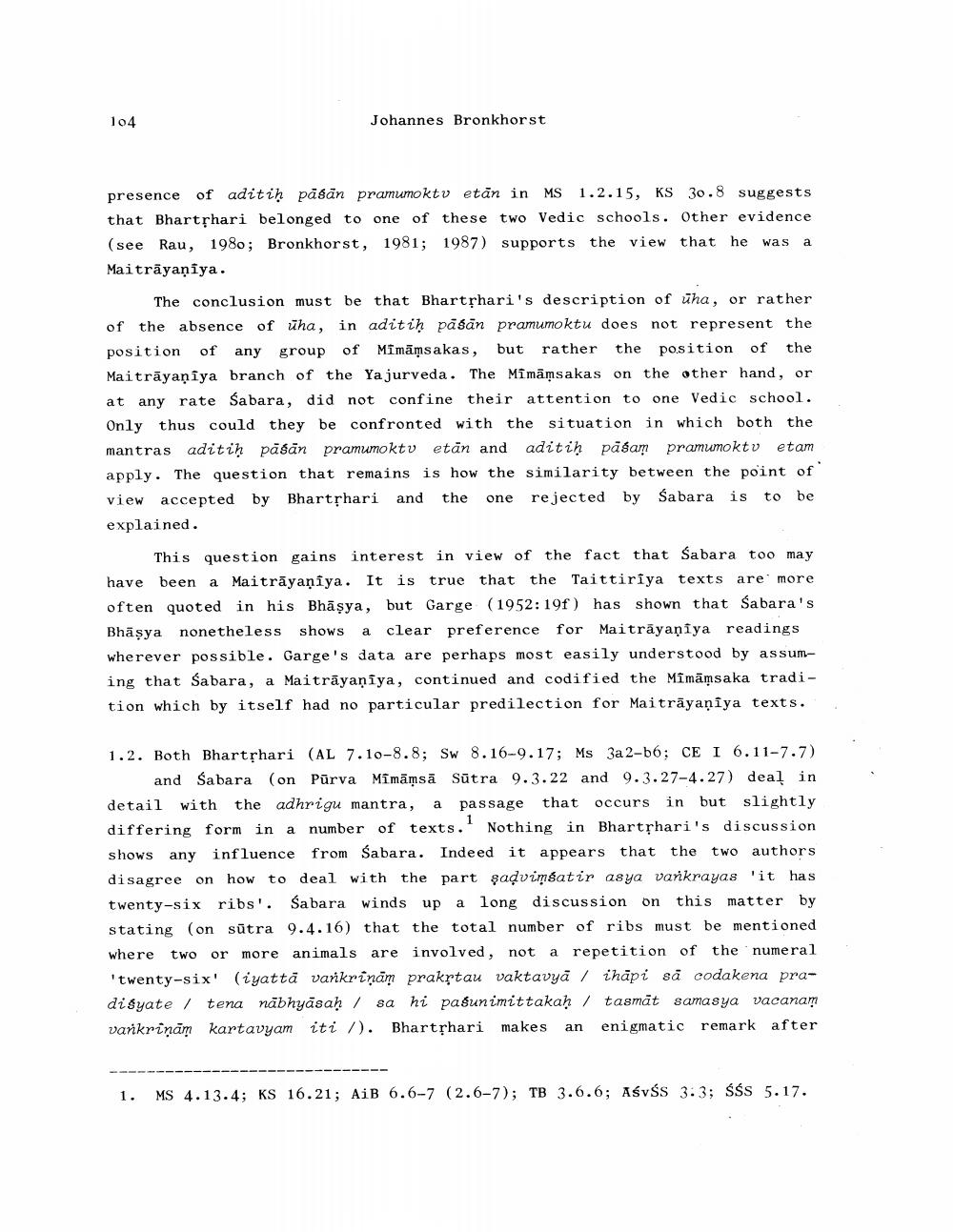Book Title: Studies On Bhartrhari Author(s): Johannes Bronkhorst Publisher: Johannes Bronkhorst View full book textPage 4
________________ 104 Johannes Bronkhorst presence of aditiḥ pasān pramumoktv etān in MS 1.2.15, KS 30.8 suggests that Bhartshari belonged to one of these two Vedic schools. Other evidence (see Rau, 1980; Bronkhorst, 1981; 1987) supports the view that he was a Maitrāyaṇiya. The conclusion must be that Bhartshari's description of uha, or rather of the absence of uha, in aditiņ pasan pramumoktu does not represent the position of any group of Mimāņsakas, but rather the position of the Maitrāyaṇīya branch of the Yajurveda. The Mimāņsakas on the other hand, or at any rate Sabara, did not confine their attention to one Vedic school. Only thus could they be confronted with the situation in which both the mantras aditiņ pāśān pramumoktv etān and aditiņ pasam pramumoktu etam apply. The question that remains is how the similarity between the point of view accepted by Bhartshari and the one rejected by Sabara is to be explained. This question gains interest in view of the fact that Sabara too may have been a Maitrāyaṇiya. It is true that the Taittiriya texts are more often quoted in his Bhāşya, but Garge (1952:19f) has shown that sabara's Bhāşya nonetheless shows a clear preference for Maitrāyaṇīya readings wherever possible. Garge's data are perhaps most easily understood by assuming that Sabara, a Maitrāyaṇīya, continued and codified the Mimāņsaka tradition which by itself had no particular predilection for Maitrāyaṇiya texts. 1.2. Both Bhartshari (AL 7.10-8.8; Sw 8.16-9.17; Ms 3a 2-b6; CE I 6.11-7.7) and Sabara (on Pūrva Mimāmsā Sūtra 9.3.22 and 9.3.27-4.27) deaļ in detail with the adhrigu mantra, a passage that occurs in but slightly differing form in a number of texts. Nothing in Bhartshari's discussion shows any influence from Sabara. Indeed it appears that the two authors disagree on how to deal with the part sadvimsatir asya vankrayas 'it has twenty-six ribs'. Sabara winds up a long discussion on this matter by stating (on sūtra 9.4.16) that the total number of ribs must be mentioned where two or more animals are involved, not a repetition of the numeral 'twenty-six' (iyattā varikrinām prakrtau vaktavyā / ihāpi să codakena pradisyate / tena nābhyāsah / sa hi pasunimittakaḥ / tasmāt samasya vacanam vankrinām kartavyam iti /). Bhartrhari makes an enigmatic remark after 1. MS 4.13.4; KS 16.21; AiB 6.6-7 (2.6-7); TB 3.6.6; AśvśS 3.3; ŚŚS 5.17.Page Navigation
1 2 3 4 5 6 7 8 9 10 11 12 13 14 15 16 17
